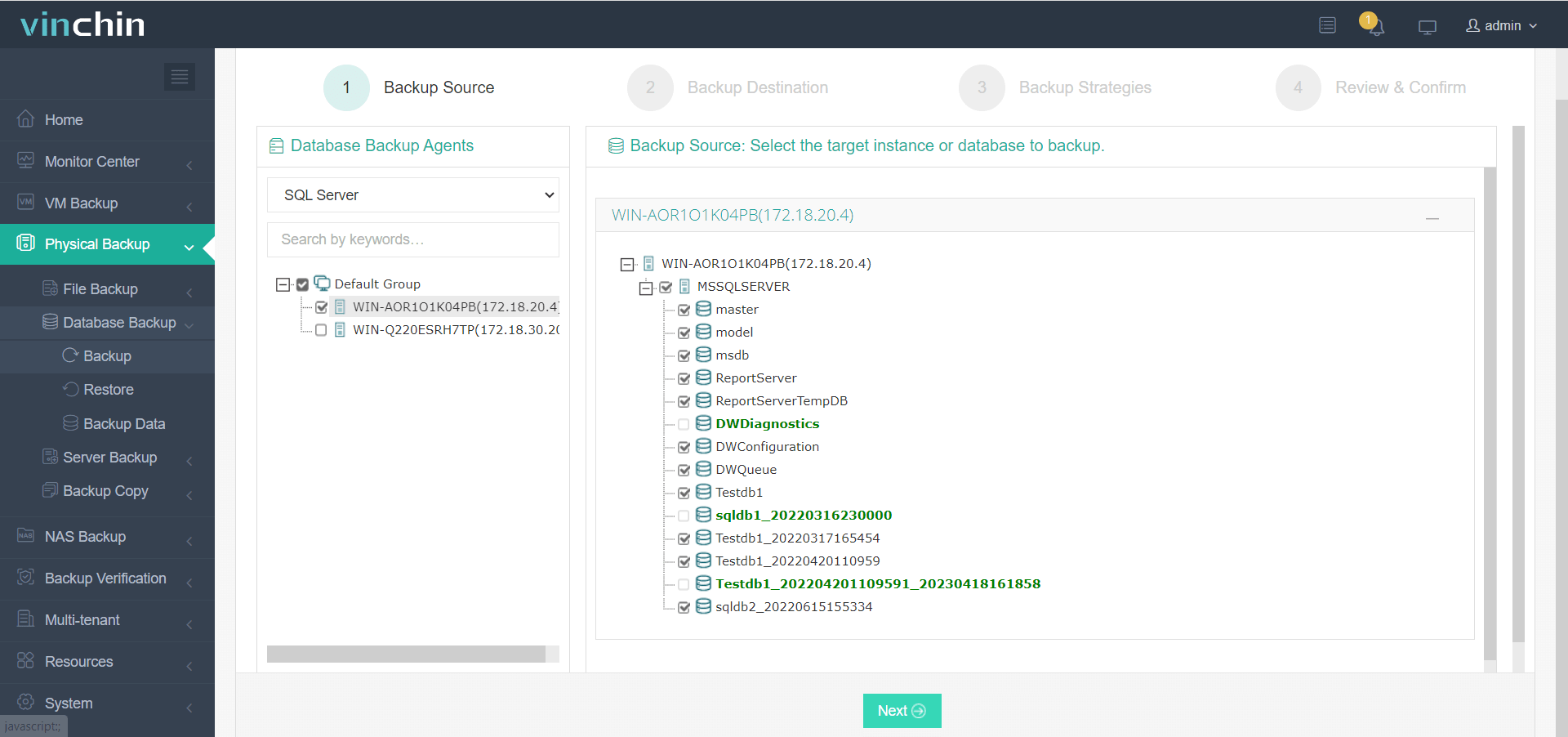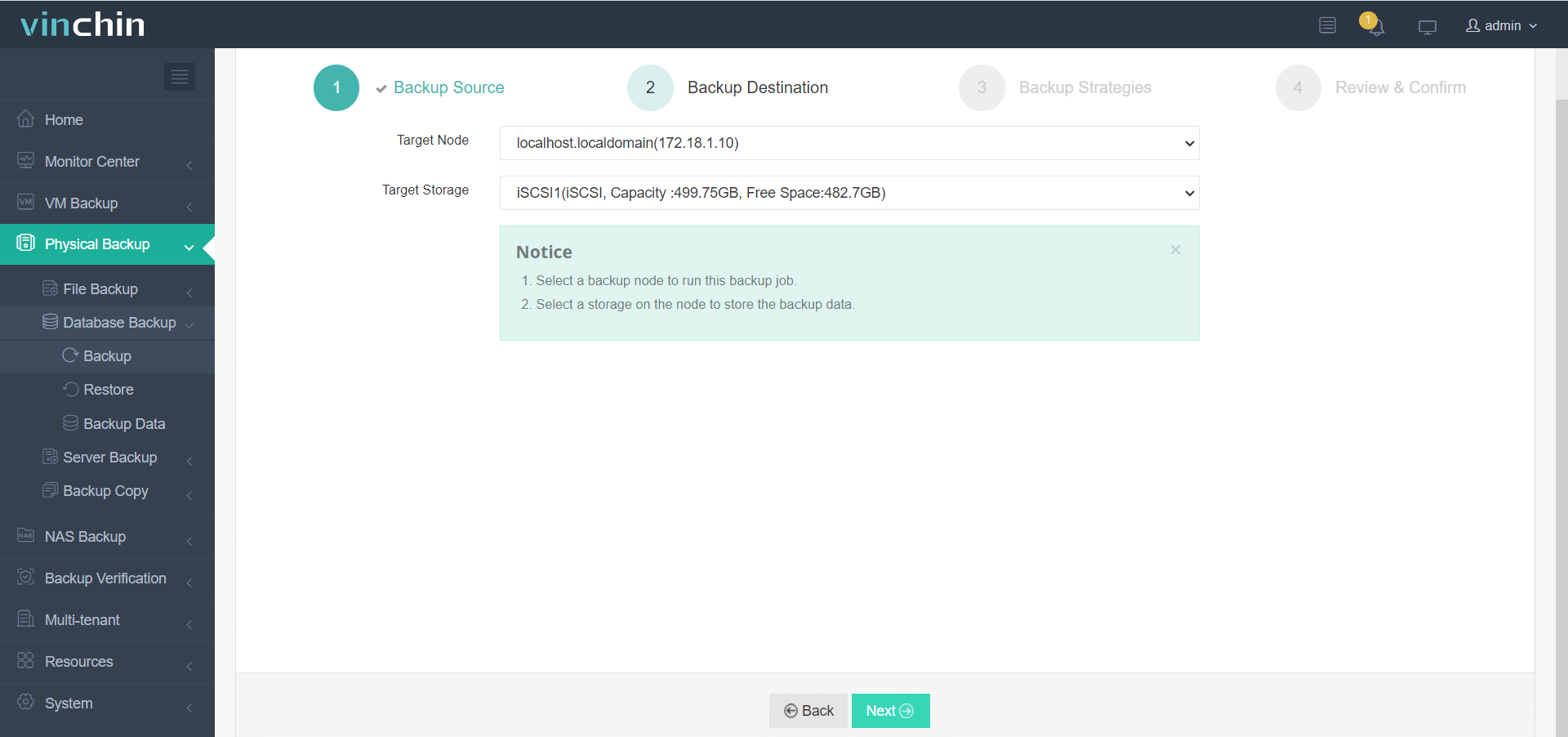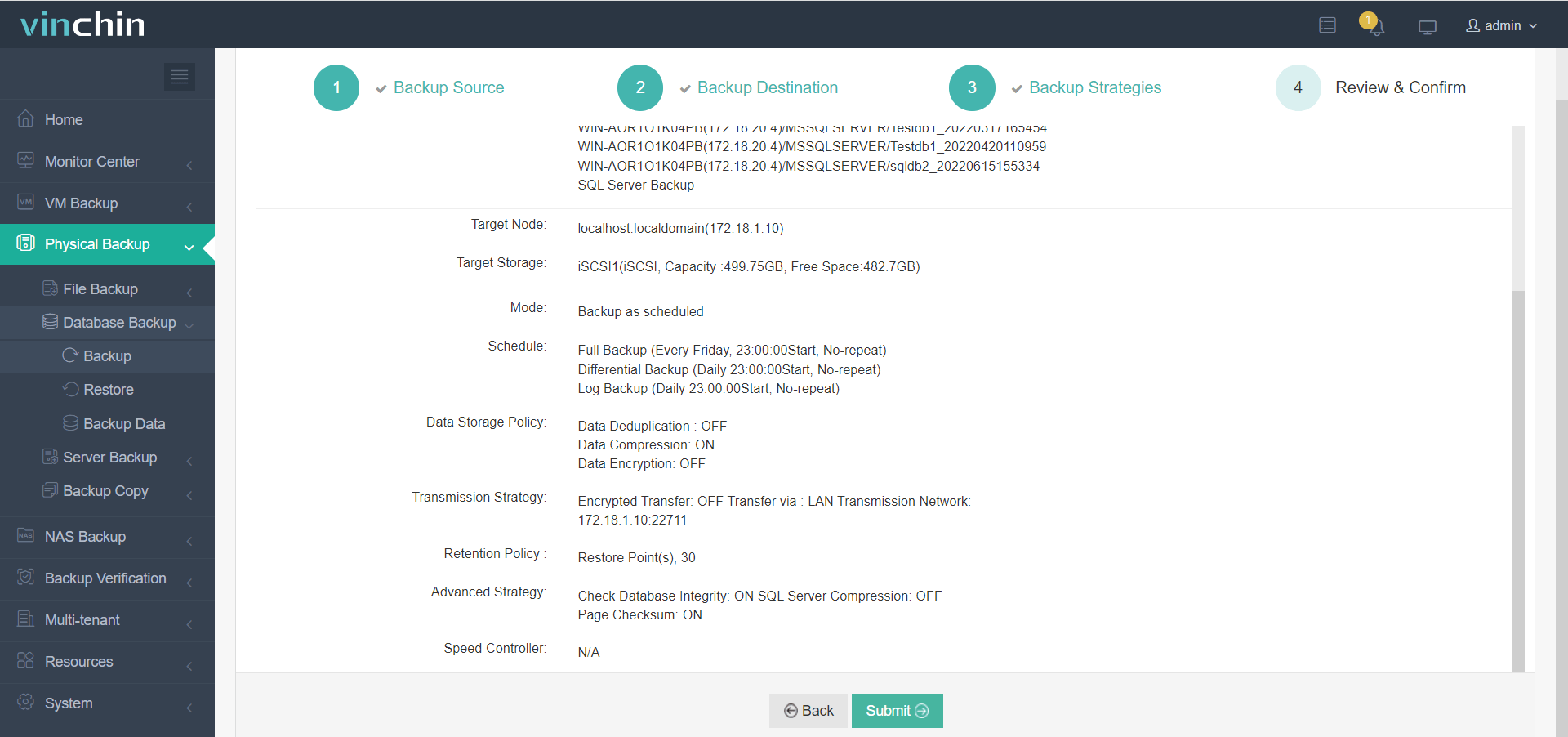-
What Is SQL FTP Backup?
-
Why Use FTP for SQL Backups?
-
Security Considerations for FTP Backups
-
Method 1: Manual SQL Backup via FTP
-
Method 2: Automated SQL FTP Backup Using Scripts & Scheduling
-
Effortless SQL Server Protection With Vinchin Backup & Recovery
-
FAQ About Real-Life Scenarios With SQL FTP Backups
-
Conclusion
Data loss is not just an inconvenience—it can be catastrophic. Ransomware attacks, accidental deletions, hardware failures, or even regulatory audits can put your business at risk if you lack reliable backups. For many organizations, off-site storage of SQL database backups is essential to meet compliance standards like GDPR or HIPAA. Using FTP servers for this purpose remains popular due to their accessibility and ease of automation.
In this guide, you’ll learn what SQL FTP backup means, why it matters in today’s threat landscape, how to set it up manually or automatically—including advanced scripting—and how Vinchin can make the process seamless.
What Is SQL FTP Backup?
SQL FTP backup involves two main steps: creating a backup file from your SQL database and transferring that file to a remote server using File Transfer Protocol (FTP). This approach gives you an off-site copy of your data that’s ready for recovery if disaster strikes.
The process works like this: first you generate a consistent snapshot of your database—often called a dump or backup file—then you move that file over the network to an external location via FTP. If something goes wrong locally—a fire in your server room or malware infection—you still have access to your data elsewhere.
Why Use FTP for SQL Backups?
FTP is one of the oldest protocols for moving files between computers—and it’s still widely supported today. Many hosting providers offer built-in FTP access at low cost or even free with certain plans.
By sending your SQL backups to an FTP server:
You keep copies off-site so local disasters don’t wipe out everything.
Automation becomes easy since most operating systems support scheduled tasks involving FTP transfers.
You gain flexibility; almost any platform can connect via FTP without extra software.
However, plain FTP has limitations—especially around security—which we’ll discuss next.
Security Considerations for FTP Backups
Before setting up any backup routine over FTP, consider security risks carefully. Plain FTP sends data—including usernames and passwords—in clear text across the network. Anyone intercepting traffic could read sensitive information or steal credentials.
For better protection:
Prefer SFTP (SSH File Transfer Protocol) or FTPS (FTP Secure) instead of plain FTP whenever possible; both encrypt data during transfer.
Encrypt backup files before uploading them using tools like
openssl(openssl aes-256-cbc -in dbbackup.sql -out dbbackup.sql.enc) or PowerShell’sProtect-CmsMessage.Store credentials securely—never hardcode them in scripts; use environment variables or secure vaults where feasible.
Limit user permissions on your target server so only authorized accounts can upload/read/delete backups.
Taking these steps helps protect both your data in transit and at rest—even if someone gains unauthorized access to your storage location.
Method 1: Manual SQL Backup via FTP
Manual SQL-to-FTP backup is simple but best suited for small environments or occasional needs when automation isn’t required yet.
Start by generating a fresh backup from your database system:
1. For Microsoft SQL Server:
Open SQL Server Management Studio
Connect to your instance
Right-click on the target database
Select Tasks, then Back Up...
Choose Full as type; set destination path such as
C:\Backups\YourDatabase.bakClick OK to run
2. For MySQL:
mysqldump -u username -p database_name > /path/to/backup/yourdatabase.sql
Replace username, database_name, and paths accordingly.
Next comes uploading:
1. On Windows Command Prompt:
ftp ftp.yourserver.com
Enter credentials when prompted
Use put C:\Backups\YourDatabase.bak /remote/path/YourDatabase.bak
2. On Linux terminal:
ftp ftp.yourserver.com # Log in with credentials put /path/to/backup/yourdatabase.sql /remote/path/yourdatabase.sql
After upload completes:
Log into your remote server using any client tool
Confirm presence of uploaded file
Download occasionally from remote storage
Test restore procedures regularly—don’t wait until disaster strikes!
Manual methods work well but quickly become tedious if frequent backups are needed—or if human error creeps in during busy periods.
Method 2: Automated SQL FTP Backup Using Scripts & Scheduling
Automating SQL-to-FTP backups saves time while reducing mistakes common with manual routines. With scripting plus built-in schedulers like Task Scheduler (Windows) or cron (Linux), you can create hands-free workflows tailored to any environment size.
Write Robust Backup & Upload Scripts
A good script does more than just run commands—it checks results along the way:
Example Batch Script (Windows + MSSQL)
@echo off setlocal enabledelayedexpansion REM Set variables dynamically based on date/time set DBNAME=YourDatabase set BACKUP_DIR=C:\Backups\ set DATESTAMP=%date:~-4%%date:~4,2%%date:~7,2% set BACKUP_FILE=%BACKUP_DIR%%DBNAME%_%DATESTAMP%.bak REM Create DB backup & check result code sqlcmd -S YourServerName -Q "BACKUP DATABASE [%DBNAME%] TO DISK='%BACKUP_FILE%'" if %ERRORLEVEL% NEQ 0 ( echo [%DATESTAMP%] ERROR: Database backup failed >> %BACKUP_DIR%backup.log exit /b 1 ) REM Upload via scripted commands stored outside main script ftp -s:%BACKUP_DIR%ftp_commands.txt ftp.yourserver.com >> %BACKUP_DIR%ftp.log REM Clean up old files after successful upload del "%BACKUP_FILE%"
And create %BACKUP_DIR%ftp_commands.txt containing:
YourUsername YourPassword cd /BackupDirectory/ put C:\Backups\YourDatabase_YYYYMMDD.bak quit
Replace placeholders as needed; never store real passwords in plain text unless absolutely necessary!
Example Shell Script (Linux + MySQL)
#!/bin/bash
DBUSER="username"
DBPASS="password"
DBNAME="database_name"
DATE=$(date +%Y%m%d)
BKFILE="/tmp/${DBNAME}_${DATE}.sql"
mysqldump -u $DBUSER -p"$DBPASS" $DBNAME > "$BKFILE"
if [ $? != 0 ]; then echo "$(date) ERROR: Dump failed" >> /var/log/sql_backup.log; exit 1; fi
# Optional compression step before upload
gzip "$BKFILE"
BKFILE="${BKFILE}.gz"
lftp -u YourUsername,YourPassword ftp.yourserver.com <<EOF
cd /BackupDirectory/
put $BKFILE
bye
EOF
rm "$BKFILE"Always check return codes ($?) after key operations so errors don’t go unnoticed!
Schedule Your Script Automatically
On Windows:
1. Open Task Scheduler
2. Click Create Basic Task...
3. Name task (“Nightly_SQL_Backup”), set schedule (Daily, etc.)
4. Choose Start a program, select batch script path
5. Complete wizard
On Linux:
1. Run crontab -e
2. Add line such as
0 3 * * * /usr/local/bin/sql_ftp_backup.sh >/dev/null 2>&1
This runs every day at 3 AM quietly in background.
Effortless SQL Server Protection With Vinchin Backup & Recovery
While manual scripting offers flexibility, enterprise environments demand reliability and efficiency when protecting critical databases such as Microsoft SQL Server through automated offsite backups over secure channels like SFTP/FTPS. Vinchin Backup & Recovery stands out as a professional solution supporting all major platforms including Oracle, MySQL, MariaDB, PostgreSQL/PostgresPro, MongoDB—and especially robust features tailored for Microsoft SQL Server environments.
Vinchin Backup & Recovery delivers powerful capabilities such as incremental backup options for efficient storage use; batch database backup management across multiple instances; flexible retention policies including GFS retention strategy; comprehensive ransomware protection; and seamless cloud/tape archiving integration—all designed to ensure fast recovery and regulatory compliance while minimizing administrative overhead.
The intuitive web console makes setup straightforward:
Step 1—Select the Microsoft SQL Server instance you wish to back up;

Step 2—Choose the desired storage target;

Step 3—Define scheduling and retention strategies according to business requirements;

Step 4—Submit the job.

Recognized globally by thousands of enterprises with top industry ratings, Vinchin Backup & Recovery offers a fully featured free trial valid for 60 days—click below to experience enterprise-grade data protection firsthand!
FAQ About Real-Life Scenarios With SQL FTP Backups
Q1: How do I manage retention policies on my remote server?
Use scheduled scripts that connect via SSH/SFTP/FTP commands to delete older files beyond set thresholds—for example keep last seven daily snapshots only—or configure automatic cleanup rules directly within some hosting panels.
Q2: What should I do if my database grows too large for single-file transfer?
Compress dumps before upload (gzip, 7z) or split large files into smaller chunks using tools like split; reassemble parts after download prior to restore operations when needed.
Q3: Can I verify integrity of my uploaded backups automatically?
Yes—generate checksums (md5sum, sha256sum) locally before transfer; compare hashes post-upload either manually or within automated scripts so corruption gets flagged immediately rather than discovered during emergency restores later on!
Conclusion
Backing up databases over FTP remains practical thanks to its simplicity—but always weigh security risks versus convenience when choosing protocols! Whether running manual jobs occasionally or automating robust workflows with error checking/logging/scheduled alerts—or leveraging Vinchin’s powerful features—you’re taking vital steps toward resilient IT operations.
Share on:







